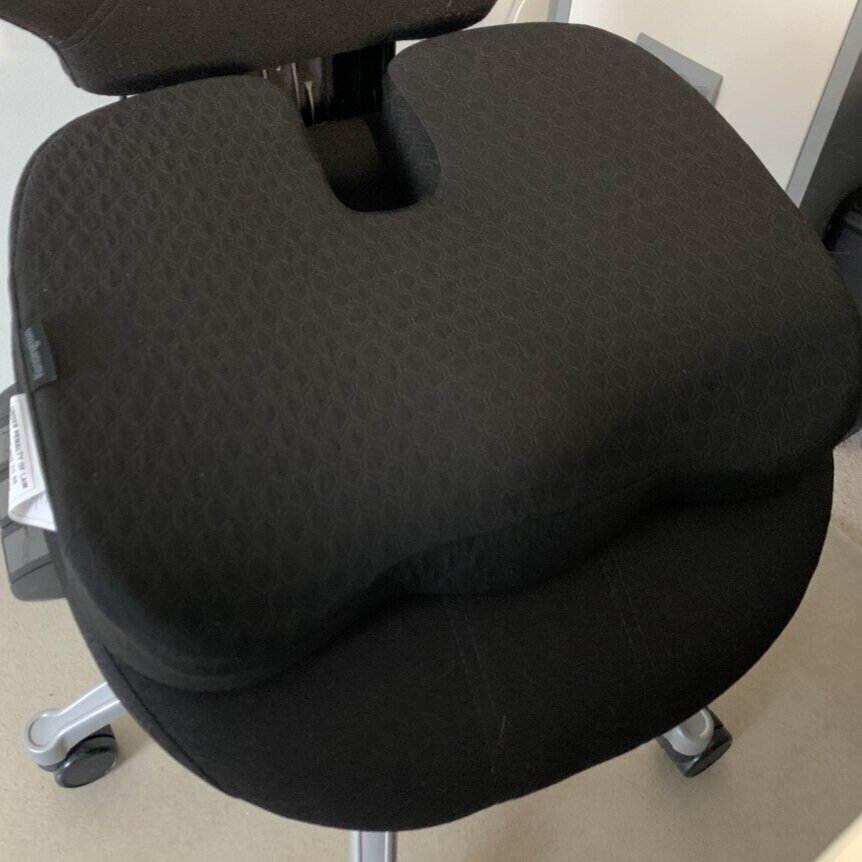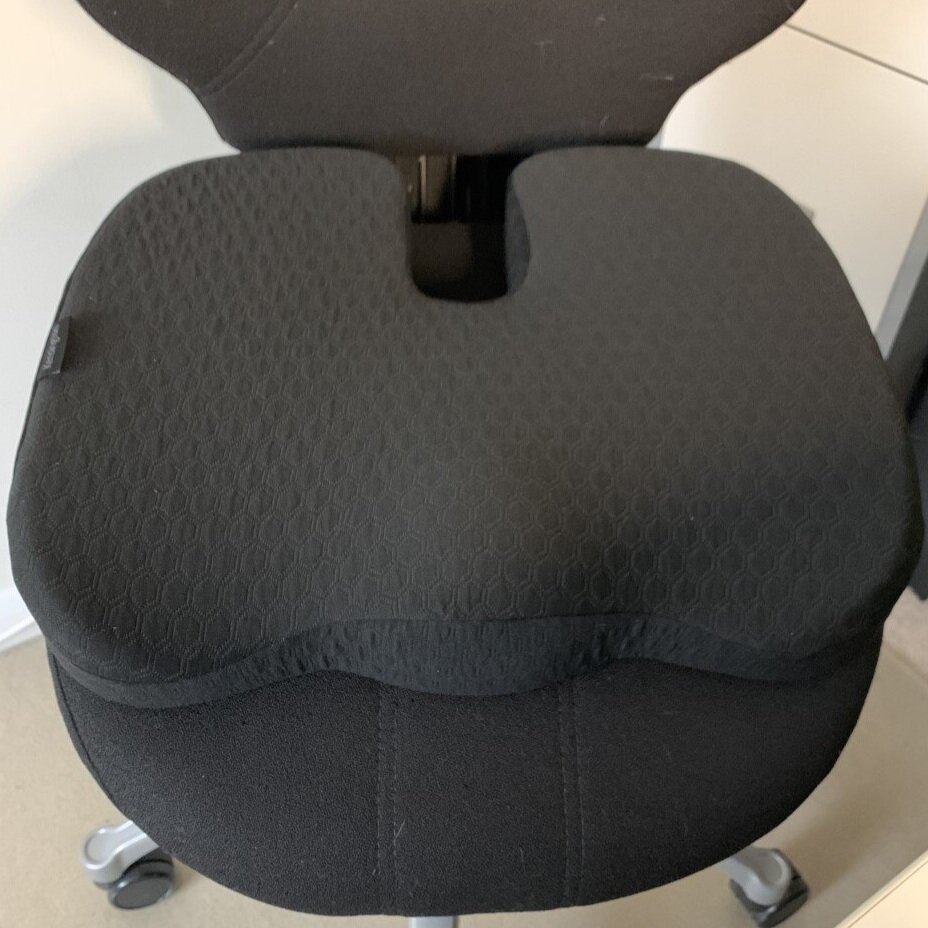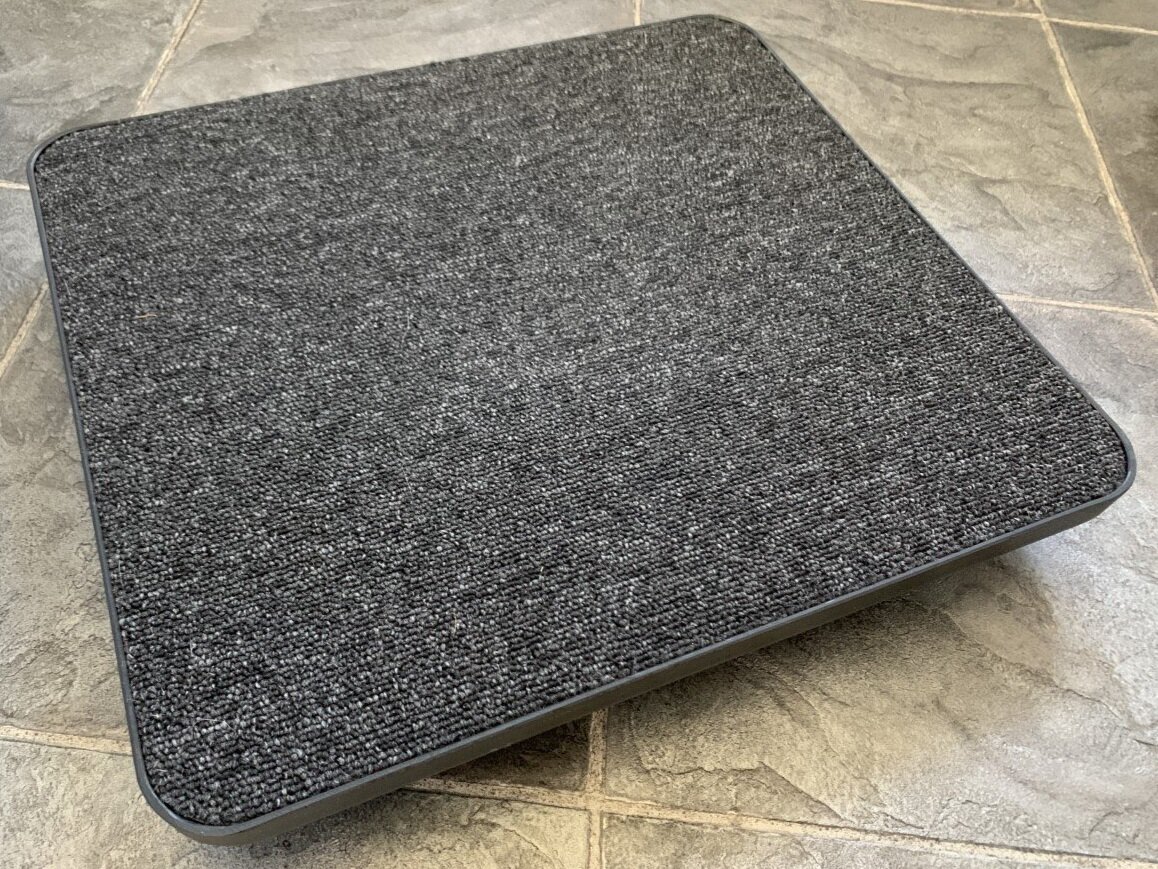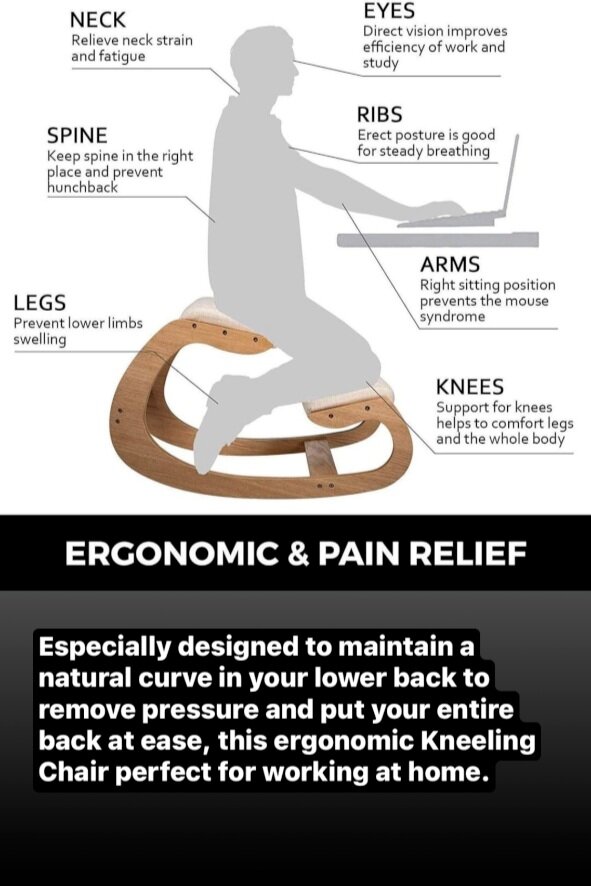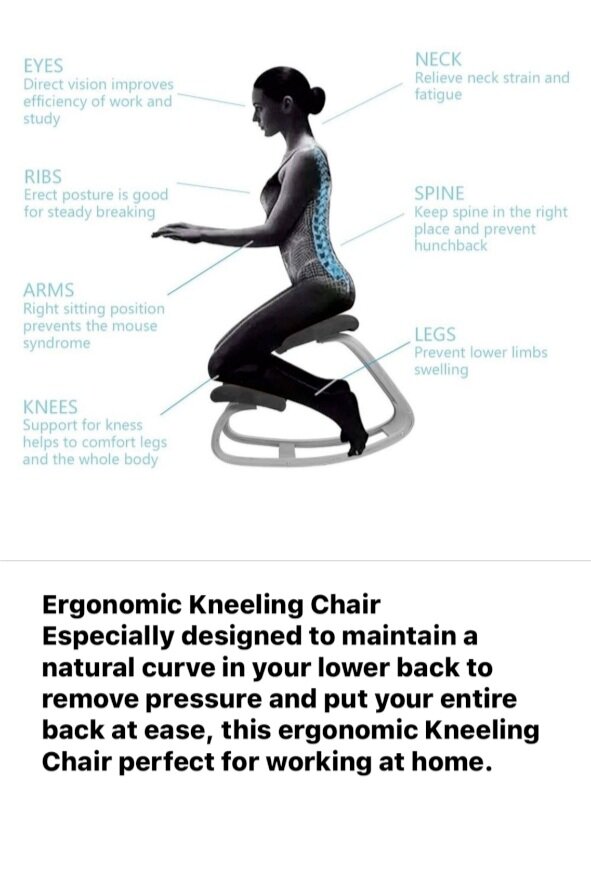Premium Cool-Gel Seat Cushion – #KensingtonWellnessReview
I’m taking part in the Kensington #WellnessAmbassador program, and as a result I have very kindly been sent a seat cushion to trial and review.
Initial Feelings
Would you like to know the very honest, first thing I said when I sat on it?! … “Ooooooooh… That. Is. Comfy”. This seat cushion features luxuriously soft memory foam, which gives you that instant feeling of comfort. In addition, I have been using it for just over a week now for a minimum of 6 hours a day, every day, and there is no evidence of any compression. In my opinion, some memory foam seat pads or additional cushions compress too easily over the course of a day, or even a few hours, and then the user is left with sensing the harder base of the seat (often MDF or plastic), negating the reason for recommending memory foam in the first place.
The coccyx cut out area is wide enough to reduce contact and pressure at the base of the spine, which is very helpful for those that may have fractured their tailbone or have been diagnosed with Coccydynia. I have seen many times, users reporting an intense shooting pain in their tailbone that occurs when switching from sitting to standing, and seat pads or cushions that feature this cut-away area are usually my go to recommendation to help prevent pressure build up and address those symptoms.
The contours at the front of the seat helps with lower limb placement (so you are less inclined to cross your legs!) and also helps to ensure circulation is not restricted. This provides a similar effect to the waterfall or hinged front edges that are apparent in good quality office chairs. In addition, this can help to elevate your hips slightly in relation to your knees, reducing the risk of posterior pelvic tilt, which can help to encourage a strong and stable upright posture.
Helpful extras
It also features a couple of very handy extras:
A carry handle to help you use it in a number of locations; such as in the car, on the sofa or at the dining table.
Removable cover that is machine washable.
Non-slip backing so you do not slide down the chair’s seat.
Considerations
Now there are a few things to consider when using a seat cushion…
Firstly, if you are sitting in a chair that is not adjustable in height, you may need to elevate your working surface and use a footrest to account for the slight increase in sitting height, otherwise you may be sitting too high in relation to your equipment and lean over your desk, and your feet may come off the floor. If you are in an office chair however, you should be able to lower the chair by the thickness of the cushion and be at the same height as you were previously.
Secondly, it can misalign where the lumbar support meets your lower back. In a non-adjustable chair, you may wish to use a lumbar support cushion in conjunction with any seat cushion, so you can ensure adequate support in the small of your back at exactly the right height for you. If you are sitting in an office chair, you should be able to raise the height of the back rest/lumbar support, again by the thickness of the cushion, to account for the increase in sitting height.
Practical application in the WFH era
A very common issue I am seeing with people still working from home is that the dining room table is too high for their sitting height and shoulder elevation occurs. By using a seat cushion to boost the sitting height, you can help to address this issue. This cushion can help in these circumstances too!
One paragraph summary
The Premium Cool-Gel Seat Cushion is a very effective and comfortable seat cushion that does exactly what it is set out to do. I would not hesitate in recommending this product to those that present with discomfort in their coccyx, or simply would like extra comfort from their seat, or perhaps need a boost in sitting height.
P.s. please excuse the cat hair, she also likes the cushion!


